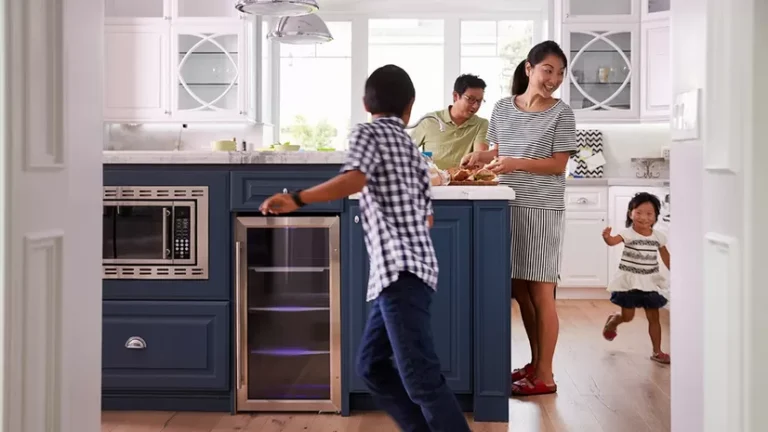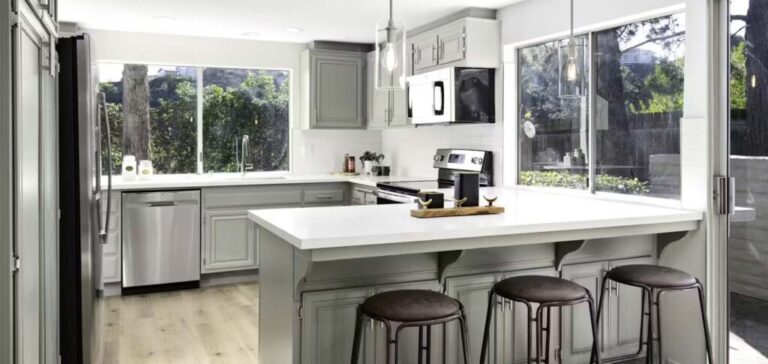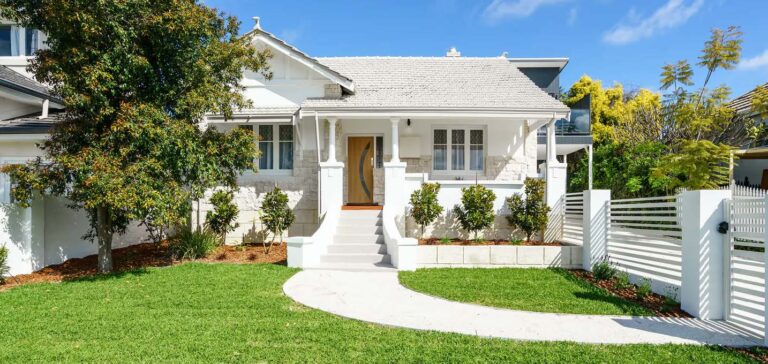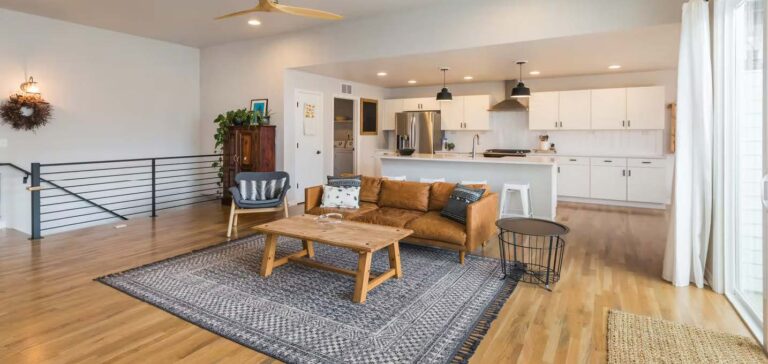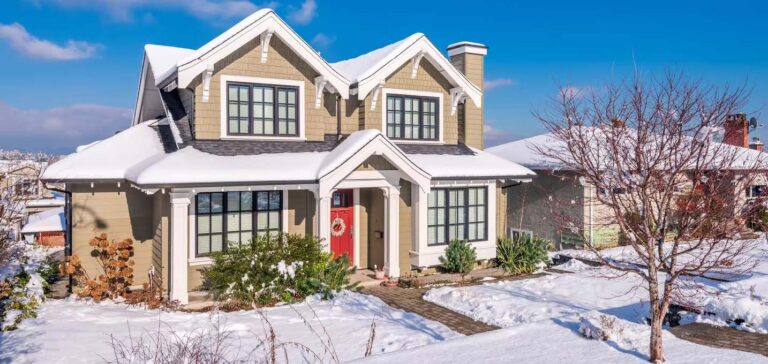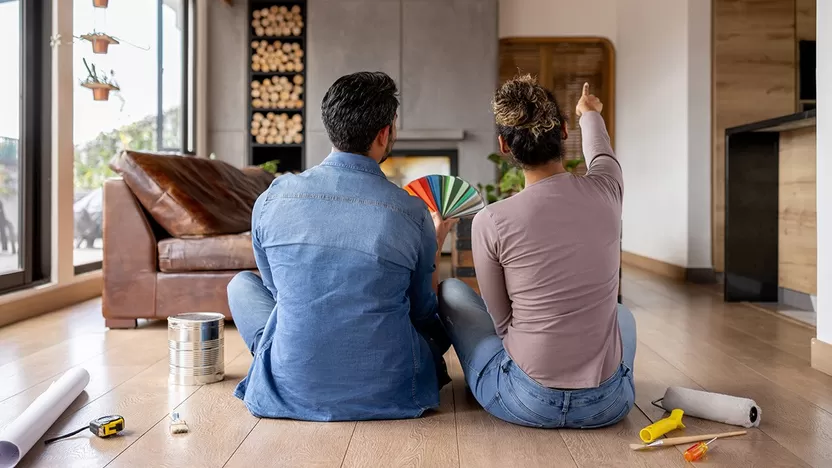
Did you buy a new house that could use a few renovations but ended up paying more than you expected when the interest rates spiked? Or maybe you were hoping to buy a new house but decided to stay put and make your existing home more livable with a few tweaks.
Or perhaps you can’t afford to make all the improvements on your wish list now that the economy is in a swirl. It’s a common scenario these days with inflation and supply chain issues making it challenging for homeowners to give their home the upgrades it deserves.
That doesn’t mean you have to scrap all your plans, though. Instead, simply break down which renovations make economic sense now and how you can pay for them.
Here’s what you should know first
While there’s no shortage of renovation ideas from inspirational Pinterest boards, there are material and labor deficits to contend with these days.
“Shortages of building materials and appliances have resulted in price inflation, making home renovations more expensive,” says Holden Lewis, home and mortgage expert at NerdWallet.
“Even if you find windows, doors, cabinets, and appliances, you might not find the models or quality you prefer,” he says. “Plus, they might cost more than you want to pay.”
But that doesn’t mean you can’t start planning now. So ask yourself these questions to discover which renovations make sense right now.
How do I deal with materials shortages?
Due to supply chain delays, some of the critical components of renovations are hard to come by. Slim pickings in lumber, drywall, steel, indoor and outdoor furniture, paint, appliances, and even joint compound might determine the type of renovations you can do.
Still, you might be pleasantly surprised if you’re patient and willing to go an alternative route to get the goods you need.
“Creativity is key when sourcing the items you need, whether that’s a new front door or updated house numbers,” says Kim Bright, and agent with the Bright Bishop Group at Compass in Jacksonville, FL. “Our team loves to find hidden gems at local salvage yards.”
Does the renovation have a good ROI?
Another thing to consider is whether the project yields a decent return on investment, or ROI. Essentially, an ROI breaks down how much money you can recoup when you sell your house.
So which projects generate a higher ROI? According to Remodeling Magazine’s 2022 Cost vs. Value Report, exterior projects reign.
That’s no surprise to Kelli Salter, agent and founder of Anchor Real Estate in Jacksonville, NC.
“COVID-19 changed our relationships with our homes,” she says. “As a result, homeowners are creating, expanding, or improving living spaces.”
A newly installed garage door that costs around $4,000 tops the ROI list, recouping 93.3% of its initial investment. Other projects with higher ROIs include window replacement, entry door replacement, exterior siding, and decks.
Surprisingly, only one interior project landed in the upper ROI range. A minor kitchen remodel costing about $28,000 fetches a. 71.2% ROI. A bathroom and primary suite remodel rendered less than 60% ROI.
Do I want a more comfortable outdoor space?
Real estate agents agree any project that enhances outdoor living spaces pays off in mental health dividends and ROI.
“People are making their own homes the place to be—creating spaces they don’t need an escape from, but a place they are escaping to,” says Salter.
So anything you do to elevate outdoor living is a winner. That might be improved landscaping, outdoor accent lighting, or fire pits.
“I’ve had several clients take outdoor decks and enclose a portion to make a screened-in porch or extend patio spaces,” adds Jane McAuley, an agent with Atlanta’s Coldwell Banker.
Is my curb appeal dull?
You’ve heard it before, but it bears repeating: Curb appeal improvements grab the attention of casual onlookers and homebuyers, which equals a higher ROI.
Pressure-washing and painting the facade, a new front door, house numbers, mailbox, and landscaping garner good ROI.
Plus, most of the products you need for this improvement should be available at your local hardware store.
Does my kitchen need some love?
“COVID-19 got so many more people into the kitchen as they spent more time at home,” says McAuley. (Remember baking all that sourdough bread and the resurgence of family meals?)
So maybe it’s time you made your cooking space more flexible and user-friendly. For a significant change on a small budget, consider adding a larger island where the family can congregate.
Other wallet-friendly upgrades? If you have an open floor plan and need segmented spaces for work or study, install barn doors or pocket doors to create flex rooms.
Or resurface or paint dated cabinet fronts and attach new hardware instead of installing all-new budget-busting cabinets, suggests Salter.
How will I pay for renovations?
If you’re planning a larger-scale renovation and have enough home equity, you can refinance your home to pay for renovations. Currently, that option is less appealing since mortgage rates have skyrocketed.
Another route to funding renovations is a home equity line of credit, which is a second mortgage or lien on the home. You can borrow the money using the equity in your home as collateral and pay only interest on the funds you withdraw during renovations.
And while it might seem counterintuitive, you can use a credit card to pay for pricey renovations. Just be sure to use a credit card with rewards points and pay off the monthly balance to avoid interest charges.
“You can even use these renovation expenses to earn a sign-up bonus on a new card more quickly, since you typically need to reach a spending minimum like $3,000 in the first three months,” says Sara Rathner, personal finance expert at NerdWallet.
Article originally appeared on Realtor.com.

